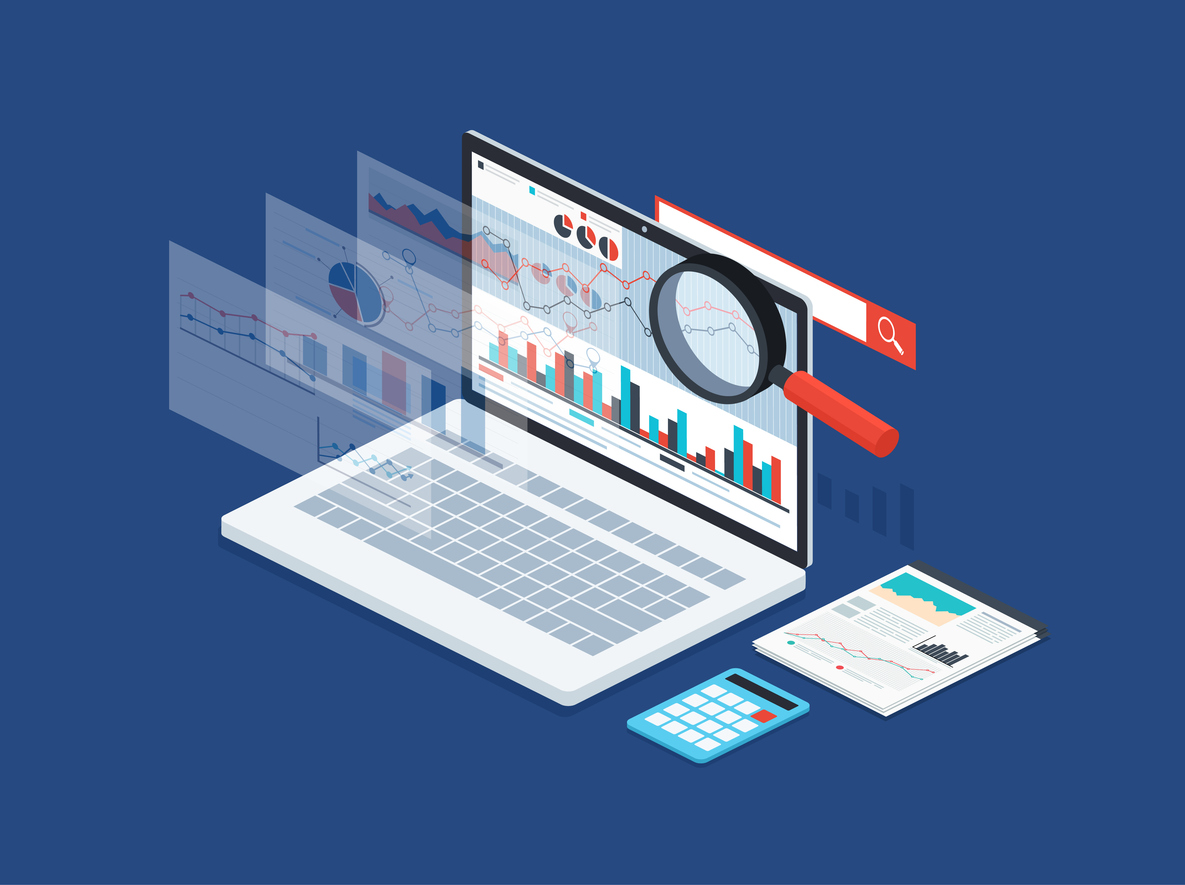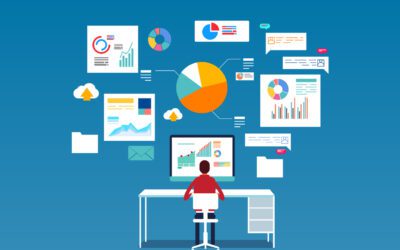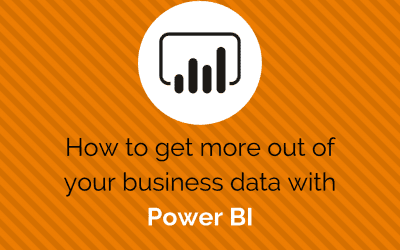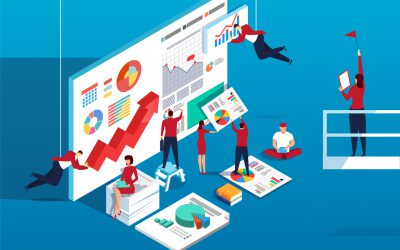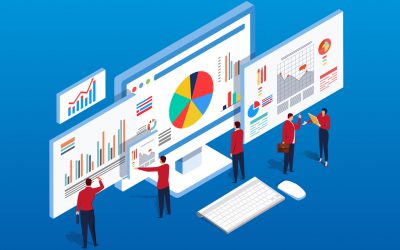Business Intelligence (BI) is the collection, analysis and presentation of data in order to support business decisions. This might be done through a number of Excel spreadsheets or more complex software such as Microsoft Power BI. However the data is collected or presented, the act of pulling data from multiple sources to show the bigger picture is one that drives business decisions every day, from the mundane to the critical.
How does Business Intelligence work?
Data collection
Business Intelligence begins with the collection of data from any of the hundreds of data sources available – CRM, ERP, websites, social media and POS to name a few. The collected data is stored in a Data Warehouse, one big file consolidating data from multiple sources into one centralised comprehensive database. At this point, the data must also be organised and cleansed to make it useful for Business Intelligence.
Data Analysis
Next, the data must be processed and analysed in order to draw meaningful conclusions. Data mining processes large sets of data to extract the useful information so patterns and trends can be analysed. Predictive analytics can also be employed at this point to identify trends in historical and current data and create an educated forecast for the future. This helps businesses to plan strategically for expected outcomes.
Often, businesses will hold such a huge amount of data, both structured and unstructured, that it becomes difficult to process using standard methods (Big Data). In this case, it may be necessary to opt for a more robust solution that uses Online analytical processing (OLAP). OLAP means that users can compare data from multiple databases at once. For example, you might want to compare this years’ sales with those from last year, and then compare that with the same data from the US, which might be stored in a separate database.
Data presentation
The final stage in the process is presenting the data for human analysis and decision making. Visualisations are used to display data and help key decision makers to interpret it. These graphics bring the data to life, enabling complex data to be understood quickly and easily. Line graphs, bar charts and maps are all types of visualisations.
What are the benefits of Business Intelligence?
Business Intelligence shows the bigger picture of what is going on within a business, allowing decision makers to make better choices based on accurate real-time data. Having that knowledge gives you the power to improve the efficiency of your operations and, ultimately, increase profits.
C-level Management
Rather than waiting for monthly or quarterly reports, insights can be made instantly from real-time data. This means more effective collaboration between teams and more intelligent decisions being made. Since most cloud-based BI applications update in real time, you can access the most recent data on any device, so you’re never out the loop.
With accurate data to back them up, it also becomes much easier to get buy-in for new ventures. You no longer need to rely on guesswork as you have a full view of the current and future state of your business in front of you. The insights gained through Business Intelligence can also help you to identify new opportunities for growth, as well as letting you see where things may be about to go wrong so you can act to keep them on the right course.
Sales & Marketing
When you can see trends in which products are selling better than others, you can adjust your strategy accordingly. Business Intelligence lets you drill-down into the data to see which locations are producing the most revenue and how many products customers are buying and from which ranges. BI also allows you to understand customer behaviours in a lot more depth, getting a full overview of the customer journey. You can then create personalised offers, give better customer service and anticipate future buying patterns.
Having such huge amounts of data at your fingertips also makes it much easier to track performance within your department. As most cloud-based BI solutions update in real time, you can constantly monitor progress towards targets and KPIs.
Operations
Analysing trends in historical and current data are key to seeing where operations can be improved. By identifying bottlenecks in your processes, you can eliminate them and further improve the efficiency of your operations. When time is money, being able to find and alleviate bottlenecks in your processes is key to being successful. BI software also gives a clear indication of your inventory levels, making it easy to ensure stock is always kept at optimum capacity.
What is the future of Business Intelligence?
Business Intelligence is not a new idea and every year it is becoming more advanced. Now businesses across the globe are harnessing the power of Machine Learning (ML), Artificial Intelligence (AI) and automation to enhance their analytics. The growing integration of ML and AI with business intelligence has meant analytics have become more accurate and easier to interpret. Machine learning can analyse data in real time and identify anomalies as they occur. This is incredibly useful for fraud analysis, where action needs to be proactive rather than retrospective.
Advanced Natural Language (NL) querying was one of the first “smart” processes introduced to Business Intelligence. The process uses natural language, such as a question or phrase, to search your data and draw insights. Using machine learning to understand what you are asking, the system can surface relevant data without needing a specialist to interpret it.
The majority of business intelligence platforms now offer some kind of predictive forecasting. Using trends in historical and real-time data, predictive analytics can accurately determine the likelihood of certain situations occurring in the future, informing future strategies and decisions. For example, predictive analytics can be used to optimise inventory management by forecasting when certain SKUs will run out. By making this judgement far enough in advance, additional stock can be ordered where necessary to ensure supply and demand stay in balance. This is particularly useful in the fashion industry where demand for specific ranges changes seasonally.
While these emerging technologies will no doubt change the way businesses operate in the future, many have concerns about their accuracy. Since machine learning relies on human decision making to develop its algorithm, human error will always be an issue, at least in the early stages of development. In much the same way, machine learning requires huge amounts of accurate data from which to learn, any error in this will result in an erroneous algorithm.

